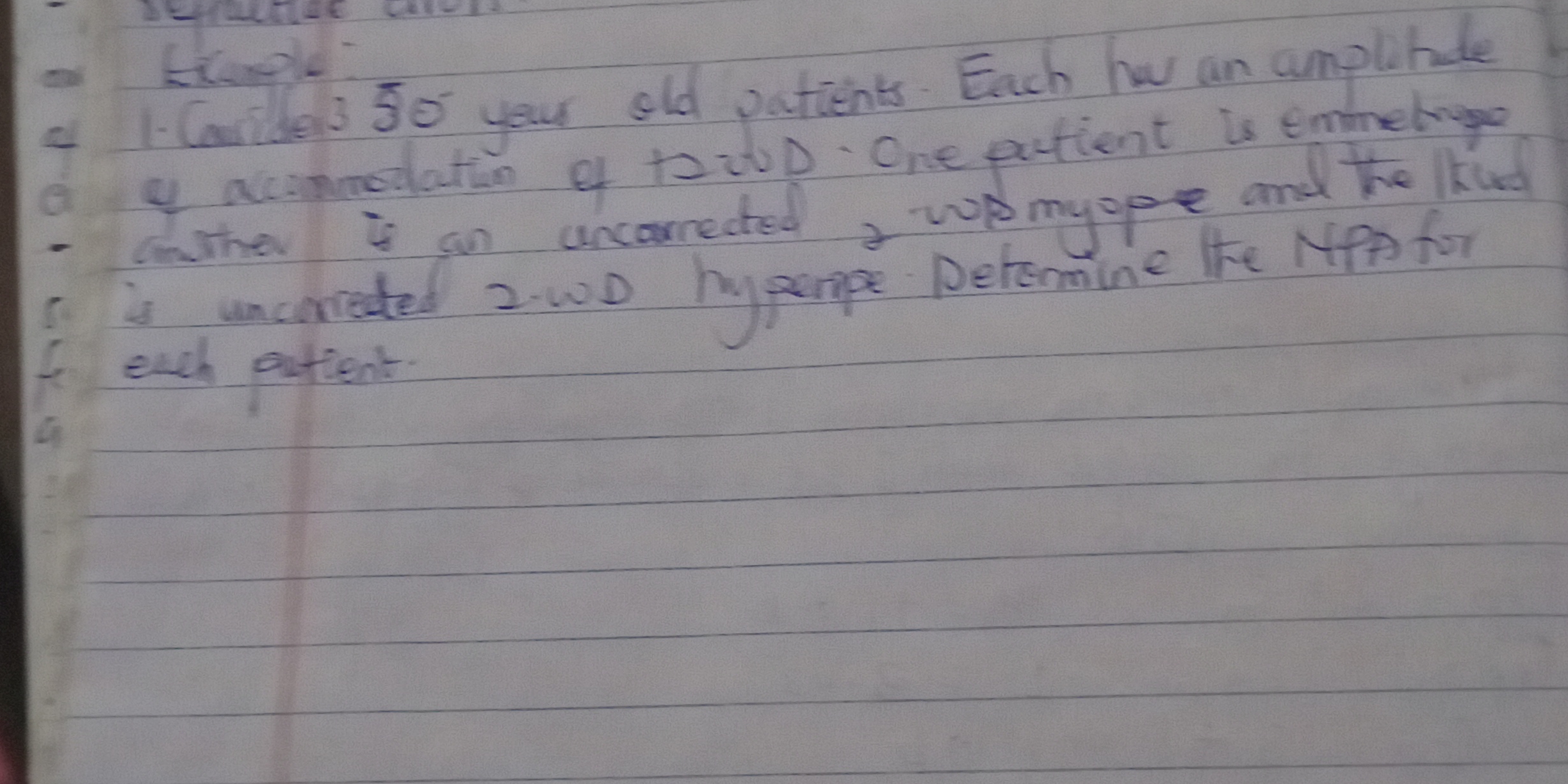Consider two 50-year-old patients. Each has an amplitude of accommodation of 1 to 2 diopters. One patient is emmetropic, and the other is an uncorrected myope and has uncorrected 2... Consider two 50-year-old patients. Each has an amplitude of accommodation of 1 to 2 diopters. One patient is emmetropic, and the other is an uncorrected myope and has uncorrected 2.0D hyperopia. Determine the NPA for each patient.

Understand the Problem
The question asks to determine the Near Point of Accommodation (NPA) for each patient. We are given that there are two 50-year-old patients. One patient is emmetropic with an amplitude of accommodation of 1 to 2 diopters. The other patient is an uncorrected myope and has uncorrected 2.0D hyperopia.
Answer
Emmetropic patient: NPA is 50-100 cm. Uncorrected hyperopic patient: NPA is 33-50 cm.
The Near Point of Accommodation (NPA) is calculated as the inverse of the amplitude of accommodation. For the emmetropic patient, the NPA is 50-100 cm. For the uncorrected hyperopic patient, the NPA is 33-50 cm.
Answer for screen readers
The Near Point of Accommodation (NPA) is calculated as the inverse of the amplitude of accommodation. For the emmetropic patient, the NPA is 50-100 cm. For the uncorrected hyperopic patient, the NPA is 33-50 cm.
More Information
- NPA (Near Point of Accommodation): The closest point at which the eye can focus clearly.
- Amplitude of Accommodation (AA): The maximum amount of focusing power the eye can exert.
Tips
Remember to convert diopters to meters by taking the reciprocal (1/diopters) and then convert meters to centimeters by multiplying by 100.
AI-generated content may contain errors. Please verify critical information